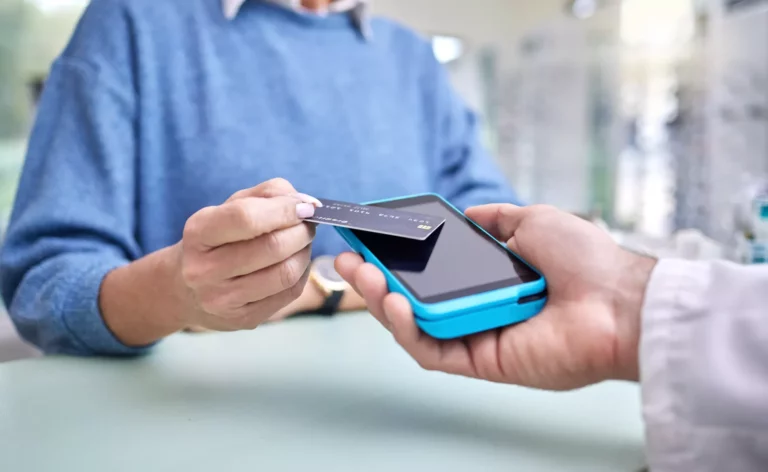8 Strategies to Improve the Patient Financial Experience
From the moment a patient walks into your clinic or hospital, they’ve already begun to form an opinion about the quality of their experience.
The goal of all healthcare providers should be to deliver patients an experience that lets them know that they are a top priority. Patient care is about more than wellness and to have a thriving practice, providers need a 360 approach to care. The secret to achieving this type of experience comes by providing user-friendly payment options.
Remember, from food delivery to buying a car to healthcare, consumer preferences are rapidly changing. Today’s patients want a streamlined experience that includes everything from fixing an appointment to hassle-free healthcare payments with price estimates and patient estimates that are easy for the patient (or insurance company) to handle.
Patients want efficiency, price transparency , and control—your exceptional care shouldn’t be judged by a clunky payment process.
Why The Patient Financial Experience Matters
The patient financial experience has far-reaching implications for healthcare providers. It’s directly connected to your organization’s financial health and impacts patient confidence and your overall reputation. As part of your retention, referral, and overall patient engagement strategy, it’s important to provide clear cost estimates and payment options to ensure a positive healthcare experience for patients.
More than ever, focusing on patient satisfaction via the financial experience is essential, as successful patient payments account for upwards of 35% of provider revenue. Less than 20 years ago, it was only 5%. Don’t risk your revenue on insurance plan nightmares. Without patients who pay, healthcare systems suffer revenue losses and can’t hit net collection rate goals. And although patients want to pay for their healthcare, they also want it to be convenient and easy with payment options that provide no surprises. You could say that a streamlined payment process is a form of pain management.
How? Patterns with modern consumerism tells us a lot. Like an abandoned online shopping cart, patients won’t follow through if it’s not easy. As many as 26% of patients who paid out-of-pocket healthcare costs said they would switch to another provider if the payment experience with payment options were better. The world has come a long way from “convenience” being a billing system that allows credit card payments. Let our team share some of our best strategies so that you can
8 Strategies to Improve the Patient Financial Experience
To create a positive experience, let’s take a moment to first broom out the sample closet. Your patient has a successful office visit. Your current billing experience seems to be understood, they signed off on their visitor guidelines with full understanding of patient responsibility. They provided their insurance plan information. And yet, patient statements have gone unresolved.
Then comes the endless text messages and phone calls to try and resolve patient balances. When enough time goes by, patient collections agencies are used – which cost you more money. Patient bills continue to linger. And in many cases, you never hear from that patient again.
The bill payment process is to blame. Not you. Fortunately, modernized patient financial tools like ours can turn this all around for you, your patient’s experience, and your office’s cash flow.
With the patient financial experience tied directly to both your organization’s financial health and your patients’ satisfaction, improving it should be a high priority for your organization. Here are eight strategies to help you do exactly that, including cost estimate and price estimates, to provide patient access to information on payment options and insurance coverage.
1. Engage Early and Often
Every touchpoint of the patient experience matters, especially initial interactions. The earlier you can form a connection, the more likely your patients will be to use the payment options you provide them. Make it incredibly simple for patients to interact and communicate with you, and let them know what to expect every step of the way. Doesn your current system allow for text messages and other automations? If not, you are missing out. Remember, patient engagement is key.
2. Focus On Transparency
Transparency builds trust. This is why doctors discuss procedures in detail and ensure patients understand a recommended course of treatment or care. The same logic applies to patient payments, especially if you imagine the patient as a consumer. Just like consumers want to know how much something costs before they make a purchase, patients need/want to know what their healthcare bills will look like.
Discover how you can ensure financial transparency in three simple steps.
3. Double Down on Personalization
Patients want a provider that is intentional with its communications and intimately familiar with their needs. Do patients prefer emails, texts, calls, or a patient portal? Knowing this information and incorporating it into the patient payment experience with different payment options can go a long way to building patient loyalty. Remember, 75% of consumers are more likely to make purchases from a company that provides products based on their preferences and history.
4. Commit To Flexible Payment Plans
High deductible health plans translate to rising out-of-pocket costs. Healthcare costs are on the rise, meaning medical bills carry a higher price tag, which many patients can’t afford. Fortunately, patient resources and tools from AccessOne can help.
For the University of Kansas Health System, offering payment options through the help of AccessOne had an immediate, positive impact on revenue with a recourse rate of less than 10%. Flex repayment plans offer patients the leeway and choice that they need, as well as the privacy and automated installment payments they want.
5. Prioritize Mobile Payments
Healthcare, now more than ever, is all about meeting patients where they are.With respect to treatment, this is now possible thanks to remote telemedicine and similar services. In order to provide a better healthcare experience, healthcare organizations should implement effective workflows and offer cost estimate and price estimates to patients in accordance with the No Surprises Act and their insurance coverage.This same concept applies to patient payments.
Remember, receiving a surprise bill in the mail isn’t conducive to meeting patients where they are. Instead, consider payment options, such as mobile payments. Offering benefits to both patients and providers, mobile paymentsare the easiest way for patients to pay via simple text messages. With no need to download an app or even log in, AccessOne MobilePay empowers patients to easily and securely make payment options with zero friction. With MobilePay, patients can pay in full, “pay-in-4,” make a partial payment, or opt into an extended payment plan right from their phone. Imagine giving your patients more options than your office’s payment kiosk. Self-service takes away administrative tasks for a provider’s staff and reduces call center traffic.
6. Emphasize Patient Education
Patient education resources are key, but many healthcare websites fall short. Fortunately, physician leadership can remedy the issue and in addition to the relief your care proides, payment tools you introduce can have the same effect.
Research shows that when patients are informed about their financial responsibility, they’re more likely to pay. Empowering patients with knowledge about their care and payment options puts them in control and eliminates the fear of the unknown. It is a huge confidence boost that will assist patients as they plan for their medical care and position them to make better decisions regarding their healthcare needs.
7. Upskill Your Staff
Your staff is the bridge between healthcare and the patient.
Equipping them with the resources and knowledge to handle patient inquiries about healthcare payments, as well as their care, is important. Help your staff become more comfortable talking about payment options up front with patients. This will help eliminate uncertainty and boost patient confidence during the early stages of care.
8. Treat Patients Like Consumers
In 2023, providers need to understand that patients are now healthcare consumers. We began the article with this point, and we are going to finish by reinforcing it.
Providers need to be more aware of recent shifts in patient preferences if they want to attract and retain them. Here, data can help. In the same way that Netflix or Amazon collect and analyze consumer data to improve their products and services, providers need to leverage patient data to improve their overall experience. Our artificial intelligence driven platform has done the research, you don’t need to perform your own clinical trial!
The results of our testing and analysis: The greater the patient satisfaction is, the more likely they are to pay for treatment. Here, a seamless digital experience (both in general and with respect to payments) matters: nearly half of healthcare consumers say one single bad digital interaction can ruin their entire experience with a provider. Hence, providing multiple payment options is crucial to offer a better healthcare experience.
AccessOne: A Five-Star Patient Financial Experience
Healthcare leaders who want to see longevity for their organization trust AccessOne. Why? AccessOne is dedicated to improving the patient financial experience to provide better outcomes for both providers and patients. We offer a number of solutions that can boost patient satisfaction while helping you more efficiently manage your revenue cycle. Get in touch to see how payment options are the new way to patient retention.
Book a demo today, or reach out to speak with a sales team representative. Want to learn more about how providers across the U.S. are incorporating our payment options solutions? Check out our client success stories.



